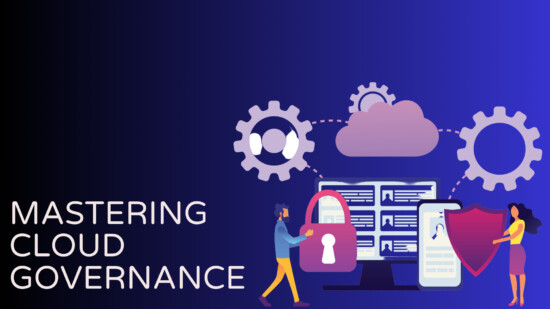As cloud trends continue to evolve, IT as a Service model (ITaaS) has emerged as an attractive model for helping to help keep IT and cloud infrastructure running efficiently, reliably, and securely. According to one report, 65 percent of IT decision-makers plan to outsource the management of their cloud operations to an outside managed services provider (MSP).
With an established track record of success across a range of environments, it’s difficult to deny the value of working with an outside IT expert. By assuming responsibility for daily maintenance and support tasks, MSPs can help keep your systems and processes operating at peak performance while freeing up IT resources to focus on more pressing business initiatives.
With the ITaaS model, businesses can connect to the entirety of the service provider’s knowledge, working with specialists who have decades of experience across industry and technology domains. These outside experts understand the complexities of technology support and work to ensure your cloud environment is aligned with business priorities and will scale appropriately.
Keeping IT efficient and agile
The IT outsourcing model is not a technology shift, but rather a transformative change where IT services transition from a generalist offering to more specialized services tailored to specific needs and use cases. The service provider manages and orchestrates the IT service lifecycle―from identifying user requirements to supporting the final outcome of an effectively delivered service.
The advantages of IT outsourcing are simple. With a cloud-based delivery model, businesses can easily scale services to accommodate shifting business needs. The cost structure for each level of service is clearly defined, enabling accurate decision-making. Meanwhile, the flexible pricing model allows a business to preserve large capital expenses for more strategic initiatives, rather than for simply keeping IT systems up and running.
Every cloud environment has its own unique challenges and opportunities. Although cost savings is important, moving to the cloud is more about determining what’s best for the organization―not solely about reducing costs. Creating a purpose-focused, business-aligned cloud approach should be your top priority. That’s where working with the right MSP can deliver immense value.
In today’s era of rapid change, short-sighted decisions can result in costly, inefficient investments and technology complexity. That’s why it’s important to carefully evaluate the depth of knowledge and technical expertise of your prospective IT provider before making any final decision. What best practice processes do they employ to solve critical issues? Are they skilled technology planners? Can they effectively support your long-term vision and goals?
Finding the best match for your unique requirements can pay long-term dividends. The following are some key attributes and capabilities to keep in mind in your MSP evaluation.
- Optimum efficiency. Flexible, subscription-based pricing is one of the core advantages of the IT outsourcing model. Look for a provider that offers monthly billing based on the range of services you need, allowing you to better plan and budget for IT expenses. Your in-house IT staff can focus on more pressing business priorities with a team of outside support specialists filling in the gaps and providing routine and specialized services where they are needed most. As your business scales, your subscription service can be expanded or downsized to match your needs.
- Fast response. With a growing focus on remote working and global operations, around-the-clock support is more critical than ever. Not only should your provider be available 24/7, but they also need to be able to respond quickly to critical issues. Your service provider should have clearly defined response capabilities and levels of expertise. How does the Help desk operate? Where is it based? What are the core hours of operation? What is the standard response time? Will you get immediate help from an expert or will someone call you back?
- Remote monitoring. Proactive performance monitoring of IT systems and cloud infrastructure can help reduce downtime and improve data security. When an issue arises, remote monitoring tools can generate alarms to inform IT staff of pending or active breakdowns, capacity issues and other IT systems or network-related events. Your MSP should have the ability to automate the monitoring and management of your IT infrastructure, including servers, workstations, firewalls, routers, network devices, and switches across your environment. When action is required, alerts can trigger your IT team or your service provider’s Help desk to initiate the appropriate response.
- Clear expectations. MSPs typically provide a standard agreement that addresses most scenarios, but if something slips through, it’s vital to know what the next step is. Your MSP should provide a clearly-defined service-level agreement (SLA) that outlines in detail the specific scope of services provided. It should define the core areas of responsibility, performance expectations, and methods of resolution concerning disagreements and outcomes should an issue arise. Your SLA should include core elements such as speed of response, prioritization policies, and the time required to solve issues. The SLA scope is usually aligned with the expectations of IT and individual business units, which can benefit both parties.
- Technology planning: An important advantage of the managed services model is its proactive approach, which focuses on identifying and addressing issues before they can impact business performance. Effective planning requires a holistic approach that effectively blends proven techniques and practices with advanced technologies. A good IT provider will develop a clear picture of your IT capabilities and prepare a defined action plan to help ensure the best approach to migrating platforms and applications for optimum performance and efficiency. You should be able to rely on the expertise of your provider to assist you with ongoing planning and strategy―using their depth of experience to continuously look for ways to save money, improve performance and leverage technology to support your company’s long-term growth.
- Manage complexity: Cloud environments can add complexity to your IT infrastructure, making it difficult to monitor and troubleshoot issues compared to traditional environments. That’s why it’s critical that your IT provider be up to speed on the latest cloud deployment and application management techniques. Working as an extension of your IT team, you should be able to connect to the entirety of the MSP’s knowledge, working with specialists who have decades of experience across industry and technology domains. MSP experts understand the complexities of technology support and work to ensure IT systems and processes are aligned with business priorities and will scale appropriately.
- Safeguard assets: Data security should be a top consideration in any cloud support decision. Your IT provider should have deep experience in cybersecurity and disaster recovery planning and be capable of effectively guiding you on new and emerging compliance requirements. They should be well-versed in the ability to define your business requirements and implement a security plan that aligns with your current and long-term needs. With today’s flexible managed services offering, look for a provider who can integrate the entire process of backup and recovery into a single service. Storage, design, testing, and around-the-clock proactive backup monitoring allow you to keep an eye on performance without having to manage the task yourself.
- Scale efficiently: Your MSP should be skilled at managing the complexities of cloud deployments and willing to work with you to make sure you optimize your existing infrastructure and resources. The provider should be able to accurately assess the level of integration you require in your cloud infrastructure, taking into account your available resources, security requirements, and compliance demands. Ultimately, your cloud infrastructure should be able to effectively scale to meet shifting workload demands, improve operational efficiency, and avoid vendor lock-in.
Gaining a performance edge
Most IT organizations are stuck in reactive mode, continuously putting out fires and rushing to resolve the latest crisis. Reactive measures can’t be completed avoided, but you can improve your approach. By outsourcing ongoing cloud management and support tasks to a trusted partner, you can focus on more strategic priorities and enjoy greater peace of mind knowing that your IT operation is running smoothly and efficiently. Given the enormous upside potential, the sooner you engage with an expert IT partner, the better.







